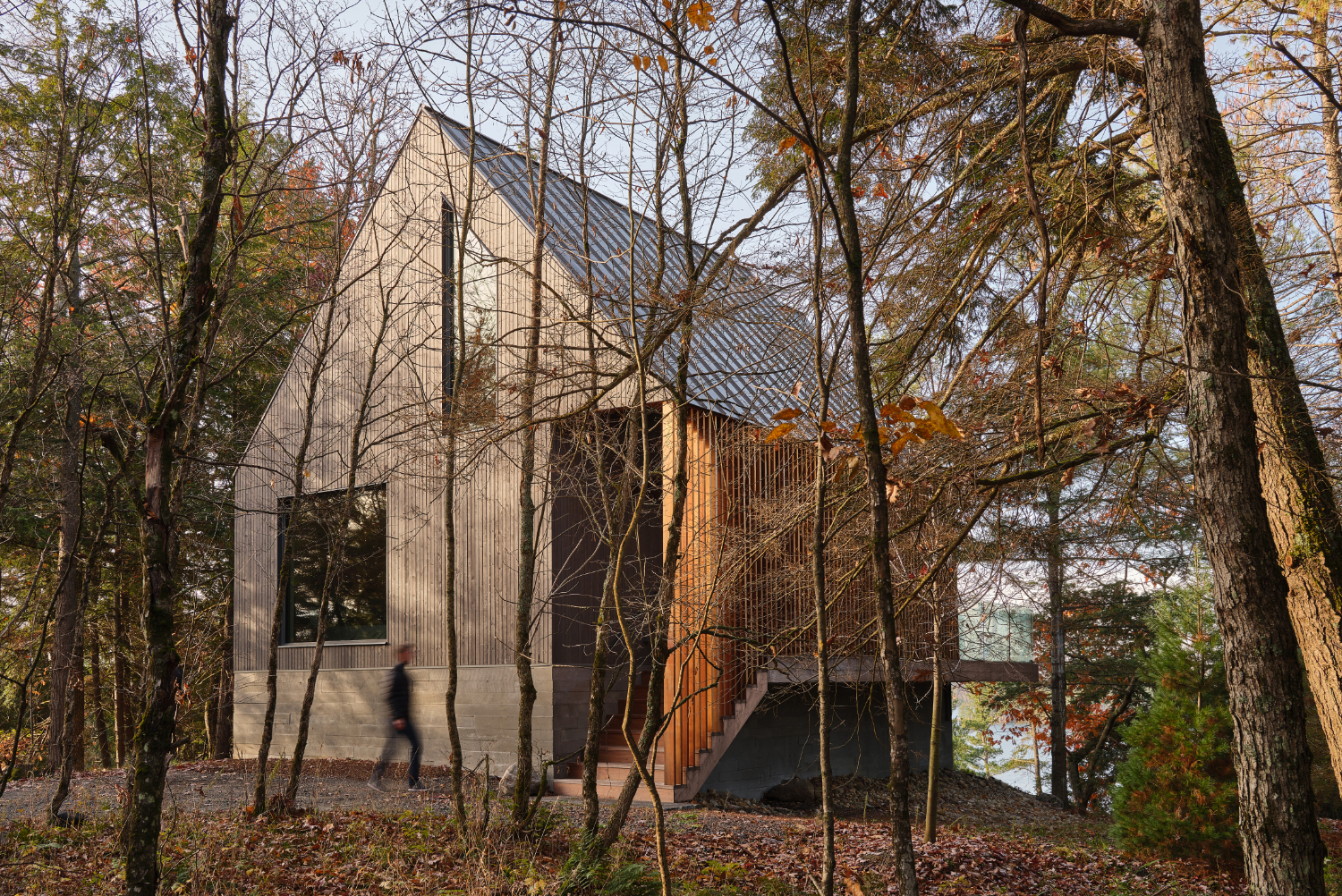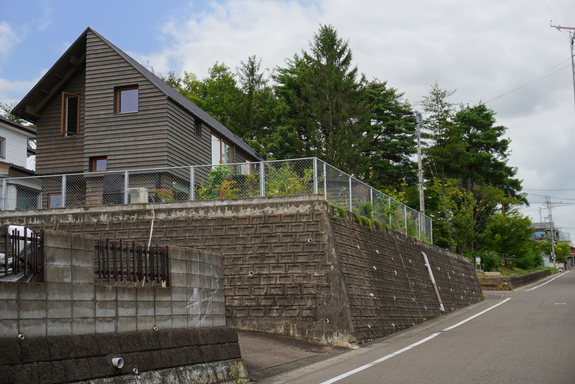Filter
0 %
rates

Situated high above a collection of multi-generational cottages below, Bunkie on the Hill serves as a quiet haven in the trees for family members to retreat and re-connect with nature.
The smallest in a collection of cabins scattered across four family properties, a Bunkie on the Hill serves as a space of respite for a family-oriented client in Muskoka. Designed by Dubbeldam Architecture + Design, the Bunkie is tucked into the trees at the top of a steep slope, providing a quiet space away from the action of the multi-generational family cottages below.
A contemporary interpretation of the traditional A-frame shape evokes the quintessential cabin in the woods, differentiated by shifted roof volumes. Reminiscent of the overlapping layers of rock in the surrounding landscape, the split roof design features two intersecting gables that create opportunities for window openings where the roof volumes separate. These geometric windows allow for curated views of the treetops on one side and lake below on the other and invite natural light to flood the interior of the cabin, reflecting off the sharp roof angles and creating dramatic lines and shadows. The cabin’s split roof design also generates distinct elevations on either side – a tall, narrow, glazed facade facing the lake, and a wider, more opaque elevation facing the forest, with a cut out for a covered entrance on the west side. Located midway along the side façade, the cabin’s entrance features a walkway with a slatted cedar screen on one side which echoes the tree trunks seen through framed views at each end. The cedar slats are animated by the ever-changing west light that filters through its openings, producing a dynamic interplay of light and shadows that enhance the richness of the material and creating an engaging experience for visitors.
The Bunkie's interior is functional despite its compact size. Small nooks throughout contain storage shelves or built-in benches. Each interior space is designed to offer framed views of the surrounding forest or the lake below. The upper loft area includes a built-in desk with a view down to the living space on the first level and the vast lake beyond, as well as an extra space for sleeping. The bedroom is located at the rear and features a large window that offers immersive views of the forest.
Natural materials were chosen to complement the rustic landscape that surrounds the Bunkie. Greyed wood siding contrasts the natural cedar soffits and screen that frames the entrance, sitting atop the raw, board-formed concrete base. Interior materials include oak flooring, maple plywood, and cedar cladding, grounded by dark charcoal window frames, grey stone counters, and furniture that offers moments of colour. Principal Heather Dubbeldam describes the variety of wood species that were used to differentiate the various planes in the space. “We used white wallboard to define the interior perimeter walls, internal partitions are clad in maple plywood, and the ceiling is delineated by Western red cedar slats, bringing even more of the surrounding forest inside,” she notes.
Sustainable materials and construction methods were important to the client. The exterior walls have been thickened to serve as a passive insulator – boasting an R-value of over 40 – and include triple-glazed windows, making it possible to use a minimal heating system in the crawl space below. Flitch beams were utilized to eliminate any thermal bridges, despite the use of steel framing. To avoid the need for blasting, the Bunkie was raised above grade and its foundation constructed on top of the natural rock contours, allowing the structure to sit lightly on the landscape. Wood products used are FSC-rated and the few plumbing and light fixtures are low flow and low energy. Any patina of materials over time is intentional: as time passes the Bunkie blends back into its forested hill setting.

Chcete vidět celý text a 21 dalších fotografií?
Přihlaste se ke svému účtu, staňte se odběratelem INTRO HOUSES nebo se přihlaste k odběru newsletteru a získejte přístup nejen k tomuto článku, ale i ke spoustě dalším.
Log InStát se odběratelemZískat přístup zdarma







.jpg)